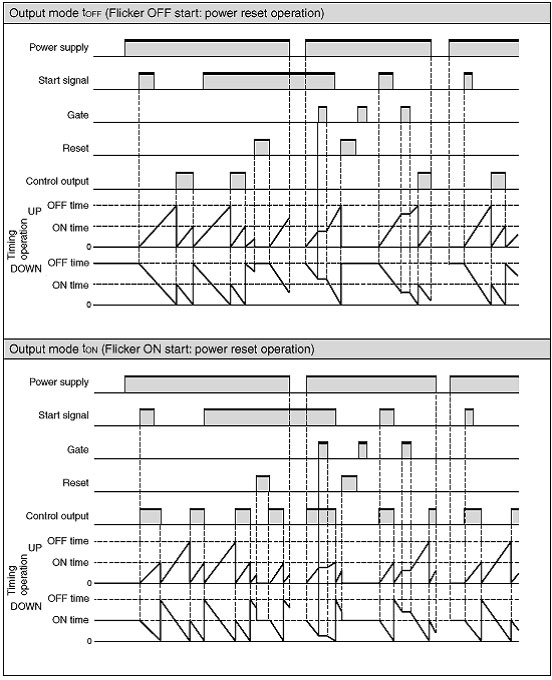How does a Twin Timer work?
The ON time and OFF time are used to produce a flicker output.
Different ON and OFF times can be set.
The following figure is the timing chart.
1. H3CR-F Series Solid-state Timers or H3DE-F Solid-state Twin Timers

2. H5CX-A/L Digital Timers

Applicable models: H3CR-F Series, H3DE-F, H5CX-A, and H5CX-L